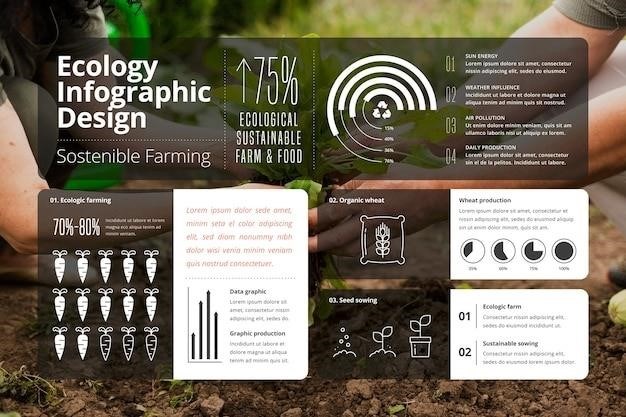Plant Design Management System (PDMS) Software Overview
PDMS software offers comprehensive CAD/CAE solutions for plant design, widely used in various industries like oil/gas, chemicals, and power․ It facilitates efficient 3D modeling and collaboration․
Introduction to PDMS and its Applications
Plant Design Management System (PDMS) software is a comprehensive 3D CAD/CAE solution used extensively in the design and engineering of large-scale industrial plants․ Its applications span diverse sectors, including oil and gas, chemicals, power generation, and manufacturing․ PDMS facilitates the creation of detailed 3D models, encompassing piping, structures, HVAC systems, and electrical layouts․ The software supports multi-disciplinary collaboration, enabling engineers from various specialties to work concurrently on a single project․ This collaborative environment enhances design efficiency and minimizes errors by enabling real-time conflict detection and resolution․ Furthermore, PDMS streamlines data management, ensuring consistency and accuracy throughout the project lifecycle․ The resulting comprehensive digital model serves as a crucial tool for construction, operation, and maintenance, significantly reducing costs and project delays․ Its robust features make PDMS a cornerstone of modern plant design․
Key Features and Capabilities of PDMS
Central to PDMS is its robust 3D modeling capabilities, allowing for the creation of highly detailed and accurate representations of complex plant layouts․ Its intuitive interface simplifies the design and modification of piping systems, structural elements, and equipment placements․ Advanced features such as clash detection identify and resolve conflicts between different disciplines early in the design process, preventing costly rework later․ Integrated data management ensures consistency and traceability of design information, facilitating efficient collaboration among team members․ The software’s ability to handle large datasets and complex geometries makes it suitable for even the most challenging projects․ Furthermore, PDMS supports customization and integration with other engineering software, enhancing its versatility and adaptability to specific project needs․ Powerful visualization tools enable stakeholders to review and assess the design in detail, promoting informed decision-making․
Popular PDMS Software Packages⁚ AVEVA, Autodesk, and Others
AVEVA’s PDMS (Plant Design Management System) is a leading example, renowned for its comprehensive capabilities and wide industry adoption․ Autodesk offers AutoCAD Plant 3D, a powerful 3D modeling solution integrated within its broader design suite․ Other notable packages include Bentley’s OpenPlant suite, providing a comprehensive set of tools for plant design and management․ Hexagon’s PDS and SmartPlant 3D are also popular choices, each offering unique strengths and features․ The choice of software often depends on specific project requirements, existing infrastructure, and organizational preferences․ Many companies utilize specialized modules and add-ons to tailor the software to their unique workflow and industry standards, maximizing efficiency and collaboration․ The market offers a variety of options, ensuring suitability for diverse project scales and complexities․
Benefits of Utilizing Plant Design Management Systems
Plant design management systems boost efficiency, accuracy, and collaboration, leading to reduced costs and project delays․ They streamline workflows and improve overall project outcomes․
Enhanced Collaboration and Data Management
Plant Design Management Systems (PDMS) dramatically improve collaboration among multidisciplinary teams․ Centralized data repositories eliminate version control issues and ensure everyone works from the most current information․ This fosters seamless communication and reduces conflicts stemming from disparate data sources․ Real-time updates and integrated workflows keep all stakeholders informed, leading to better decision-making and reduced errors․ The ability to access and share project information across geographical locations enhances global collaboration․ This centralized approach also simplifies data management, streamlining processes and reducing administrative overhead․ Efficient data tracking and version control capabilities ensure project history is fully documented and easily retrievable, simplifying audits and improving accountability․ The result is a more efficient, transparent, and collaborative design process․
Improved Design Efficiency and Accuracy
Plant Design Management Systems (PDMS) significantly enhance design efficiency through automation and streamlined workflows․ Automated processes, such as piping design and routing, reduce manual effort and accelerate project timelines․ The ability to detect and resolve clashes early in the design phase minimizes costly rework later․ Advanced 3D modeling capabilities allow for comprehensive visualization and analysis, leading to better design decisions and improved accuracy․ Real-time updates ensure that everyone is working with the latest design information, preventing errors and inconsistencies․ These systems also offer tools for design optimization, helping engineers make informed choices that improve efficiency and minimize material waste․ The result is a faster, more accurate, and ultimately more cost-effective design process․ Comprehensive design review tools facilitate efficient identification and correction of errors, further improving the overall quality of the final design․
Reduced Costs and Project Delays
Implementing a Plant Design Management System (PDMS) translates to substantial cost savings and minimized project delays․ Early clash detection and resolution prevent costly rework during construction, saving both time and resources․ Improved design accuracy minimizes material waste and reduces the need for on-site modifications․ Streamlined workflows and automated processes accelerate project completion, reducing labor costs and overall project duration․ Enhanced collaboration among design teams minimizes misunderstandings and delays caused by communication breakdowns․ The centralized data management capabilities of PDMS reduce the risk of errors and omissions, avoiding expensive corrections and delays․ Efficient design review processes ensure that designs meet specifications, reducing the likelihood of costly revisions․ Ultimately, the integrated and efficient nature of PDMS leads to significant cost reductions and keeps projects on schedule, maximizing return on investment․

Implementing a Plant Design Management System
Successful implementation requires careful software selection, comprehensive training, and seamless integration with existing systems for optimal workflow․
Choosing the Right Software for Your Needs
Selecting the optimal Plant Design Management System (PDMS) requires a thorough evaluation of your specific project needs and organizational capabilities․ Consider factors such as the scale and complexity of your projects, the number of users, and the required level of integration with existing systems․ Evaluate software features, such as 3D modeling capabilities, data management tools, and collaboration features․ Assess vendor support, training resources, and the overall cost of ownership․ A successful implementation hinges on choosing a system that aligns with your specific requirements and provides the necessary tools and support for efficient project execution․ Don’t overlook user-friendliness and the availability of expert training to ensure a smooth transition and maximize user adoption․ Thorough research and careful consideration of these factors will ensure that the chosen software effectively supports your project goals and enhances overall productivity․
Software Training and Support
Adequate training and ongoing support are crucial for successful PDMS implementation․ Comprehensive training programs should cover all aspects of the software, from basic functionalities to advanced features, ensuring users can effectively utilize the system’s capabilities․ Hands-on training sessions, coupled with detailed documentation and online tutorials, are essential for effective knowledge transfer․ Ongoing support mechanisms, such as dedicated help desks, online forums, and regular updates, are vital for addressing user queries and resolving technical issues promptly․ Vendor-provided training and support packages should be carefully evaluated, ensuring they align with the organization’s needs and provide the necessary resources for maximizing software utilization․ A robust support system minimizes downtime, enhances user proficiency, and promotes efficient project execution․ Consider the availability of specialized training for different user roles and levels of expertise․
Integration with Existing Systems
Seamless integration with existing systems is paramount for efficient data flow and streamlined workflows․ A successful PDMS implementation necessitates compatibility with existing enterprise resource planning (ERP) systems, project management tools, and other relevant software used within the organization․ Data exchange between PDMS and these systems must be smooth and error-free, avoiding data duplication and inconsistencies․ The integration process should be thoroughly planned and executed, taking into account potential challenges and compatibility issues․ Interoperability with various CAD and CAE software is essential for a fully integrated design process․ Careful consideration of data formats, APIs, and data migration strategies ensures a successful integration process․ Prioritize solutions that offer robust integration capabilities, minimizing disruption to existing workflows and maximizing the benefits of the PDMS software․

Future Trends in Plant Design Management Systems
Expect advancements in cloud-based solutions, digital twin integration, and AI/ML applications to significantly enhance plant design management systems․
Cloud-Based Solutions and Collaboration Tools
Cloud-based PDMS solutions are transforming collaboration and data accessibility․ Teams can now access and modify designs from anywhere with an internet connection, fostering real-time collaboration and eliminating geographical barriers․ Centralized data storage ensures everyone works from the same updated version, minimizing conflicts and improving design consistency․ Cloud platforms often integrate advanced collaboration features like version control, annotation tools, and real-time chat functionalities․ These enhancements streamline workflows, boost productivity, and facilitate seamless communication among geographically dispersed engineering teams․ The shift toward cloud-based systems aligns with the modern trend of remote work and promotes greater efficiency in complex, multi-disciplinary projects․ Moreover, cloud solutions offer scalability and flexibility, accommodating fluctuating project needs and team sizes․ Access to powerful computing resources through the cloud can also speed up computationally intensive tasks, such as simulations and analyses․ This improved accessibility and enhanced collaboration significantly contribute to project success․
Integration with Digital Twin Technologies
Integrating PDMS with digital twin technologies creates a powerful synergy for plant design and management․ A digital twin is a virtual representation of a physical asset, mirroring its design, operation, and performance data․ By linking PDMS models to digital twins, engineers gain real-time insights into the plant’s behavior throughout its lifecycle․ This integration enables predictive maintenance, optimized operations, and improved decision-making․ Changes made in the PDMS design are automatically reflected in the digital twin, allowing for continuous monitoring and analysis․ Furthermore, simulations and virtual testing conducted within the digital twin environment can validate design choices and identify potential problems before construction begins․ This proactive approach minimizes costly rework and downtime․ The ability to visualize and interact with the digital twin enhances communication and understanding among stakeholders; The seamless flow of information between the PDMS model and the digital twin ensures that everyone has access to the most current, accurate, and relevant information, promoting better collaboration and informed decisions throughout the project lifecycle․
Artificial Intelligence (AI) and Machine Learning (ML) Applications
AI and ML are transforming plant design management systems, enhancing efficiency and accuracy․ AI algorithms can analyze vast datasets from PDMS models and operational data to identify patterns and predict potential issues․ This predictive capability allows for proactive maintenance scheduling, reducing downtime and optimizing resource allocation․ Machine learning models can automate repetitive tasks within the design process, such as piping routing optimization or clash detection․ This automation frees engineers to focus on more complex and creative aspects of the design․ AI-powered tools can also improve design quality by identifying potential errors or inconsistencies that might be missed by human reviewers․ The integration of AI and ML capabilities within PDMS enhances the overall design process, leading to faster project completion, reduced costs, and improved plant performance․ Furthermore, AI can assist in creating more sustainable and environmentally friendly plant designs by optimizing energy consumption and resource utilization․ These advanced technologies are pushing the boundaries of what’s possible in plant design and operation․